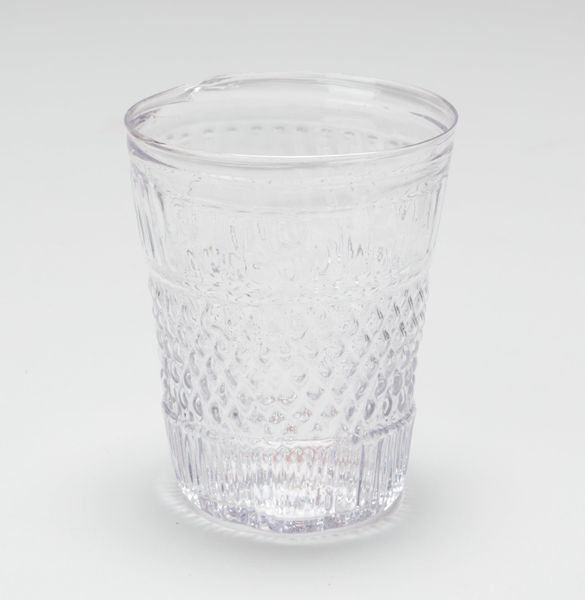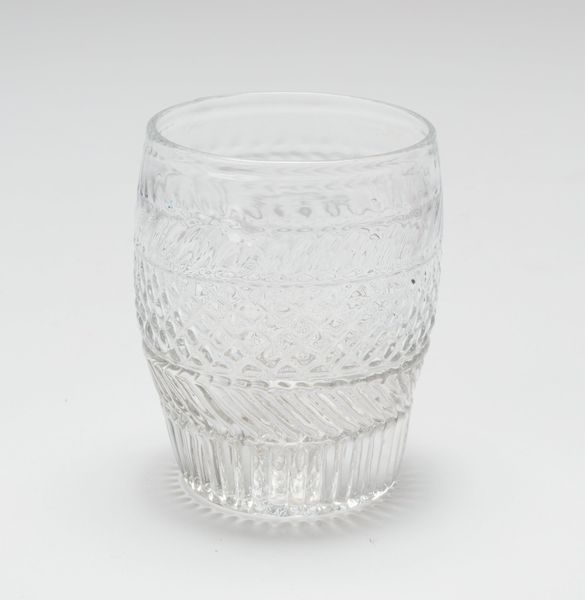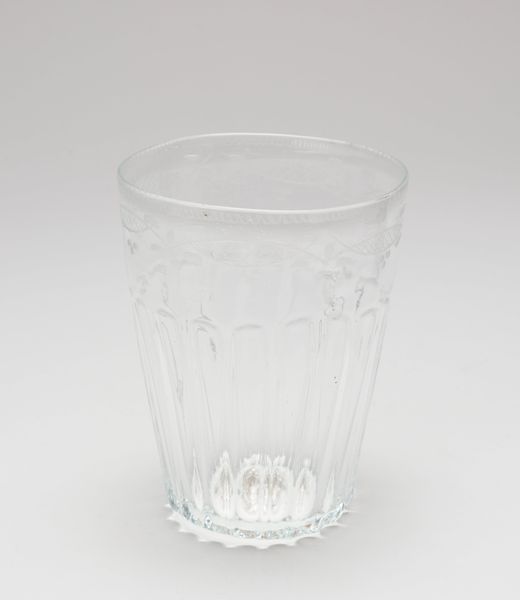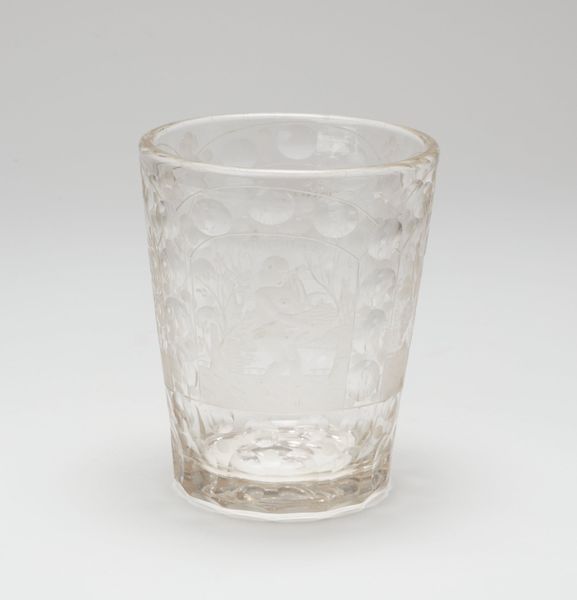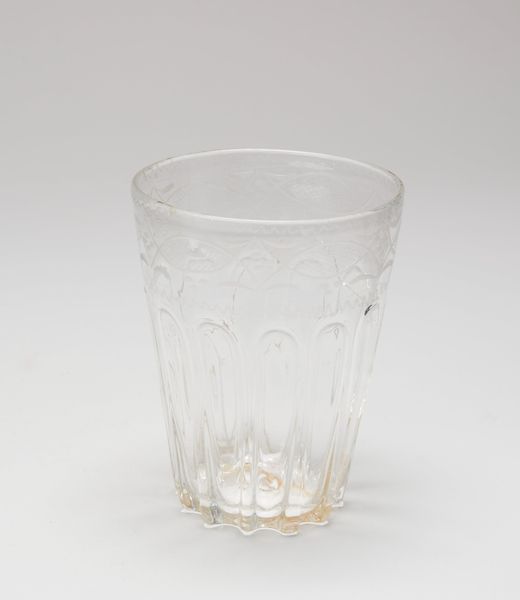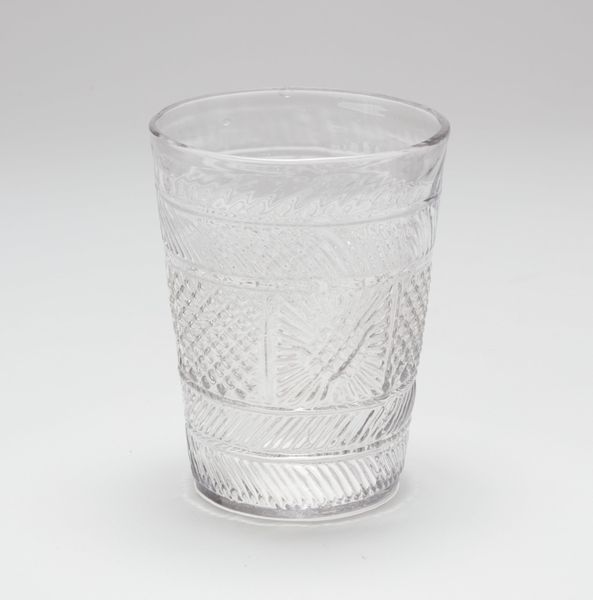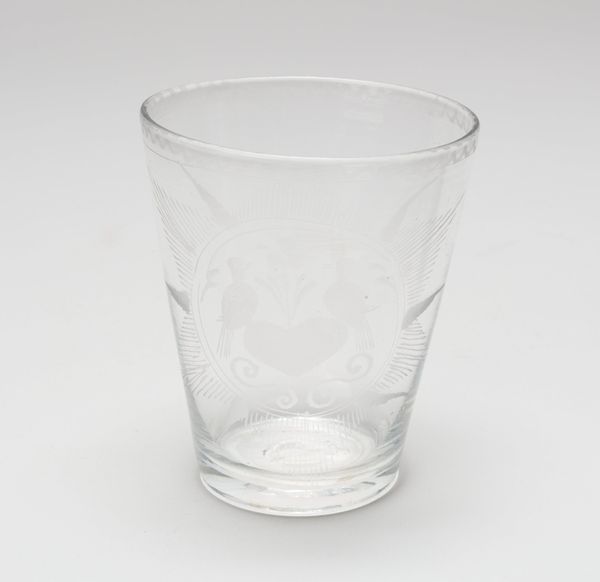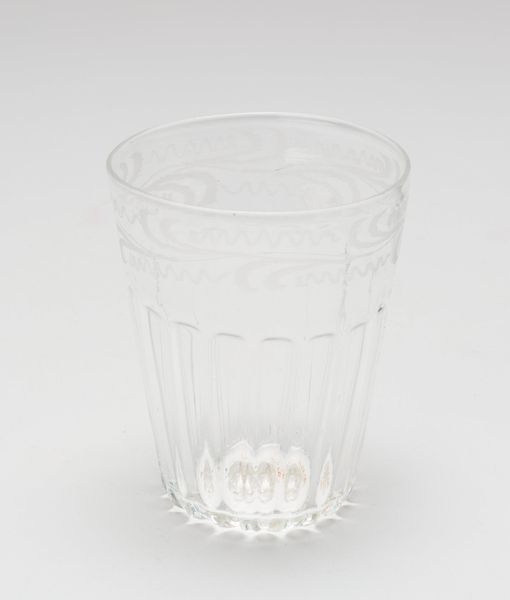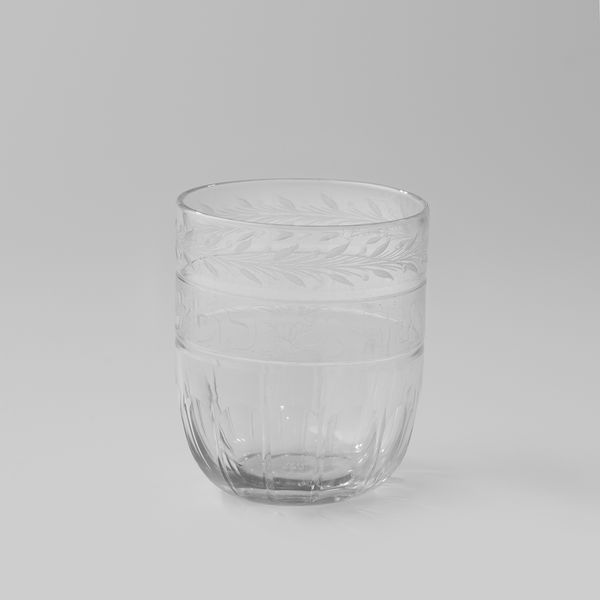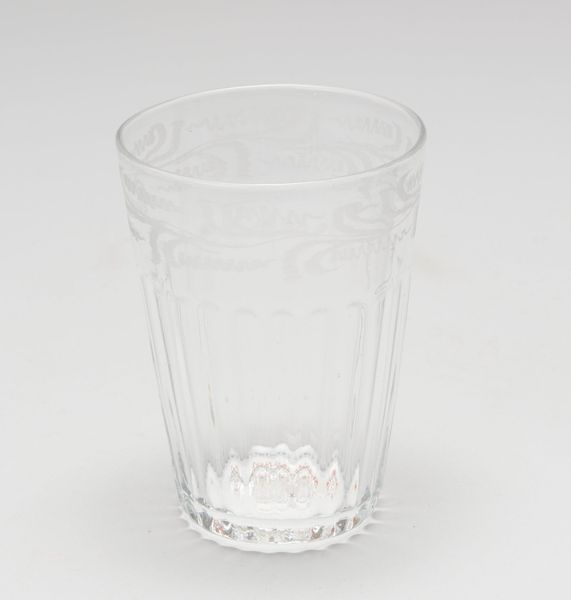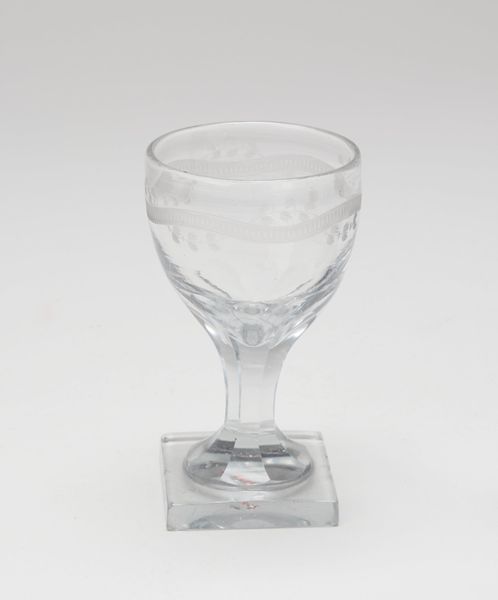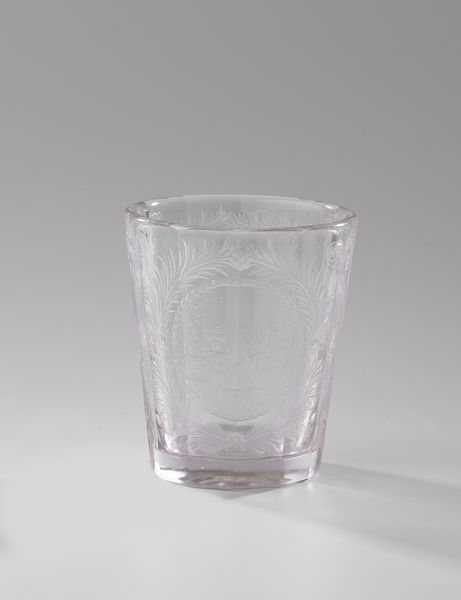
glass
#
glass
Dimensions: 5 3/4 x 4 7/8 x 4 7/8in. (14.6 x 12.4 x 12.4cm)
Copyright: Public Domain
Curator: Here we have a “Water glass,” a seemingly simple object dating from the 18th to 19th century, residing here at the Minneapolis Institute of Art. It’s crafted from glass. Editor: The simplicity is deceptive, though. Something about its geometry gives it this cool, almost clinical feel. I am also intrigued by its size. Is it larger than average? Curator: Its transparency invites an examination of the means of its production. Glassware from this period would often involve specialized labor – glassblowers, mold makers, and decorators, each contributing a specific skill. What kind of water went in it? Tap water wasn’t reliably potable back then for most people. Editor: Right, thinking about who was drinking from this... its placement in a historical power dynamic. Was it the family dinner table? Was water the servant brought up to their master or mistress? Or conversely, who *wasn't* using this? The working class most certainly couldn’t afford such delicate things, especially those toiling away in those glass factories you were just describing! Curator: Precisely. And look at the intricate pressed designs—this hints at both evolving technology and an attempt to create a kind of accessible luxury through molded rather than hand-cut glass. The rise of industrial methods impacted not just access but perceptions of taste and quality too. The tooling also impacts what a glass can or can't look like. Editor: It also highlights the contrast in that era - a time of elegance and societal inequalities coexisting side-by-side. These luxury commodities often concealed narratives of labor and social disparity, which were deeply divided along race and class lines. Curator: That’s a crucial point. The glass becomes a silent witness, reflecting social divides even in the most basic act of quenching one's thirst. And we are drinking this narrative down over and over every time we look at the glass. Editor: It reminds me how even ordinary objects like a water glass carry weighty historical implications. Examining the design can bring the people that used it to life in my mind. Curator: Absolutely. By thinking about both the material and cultural circumstances surrounding something so ubiquitous, we gain access into complex dynamics between labor, desire, and power that make it much more interesting to look at today.
Comments
No comments
Be the first to comment and join the conversation on the ultimate creative platform.
